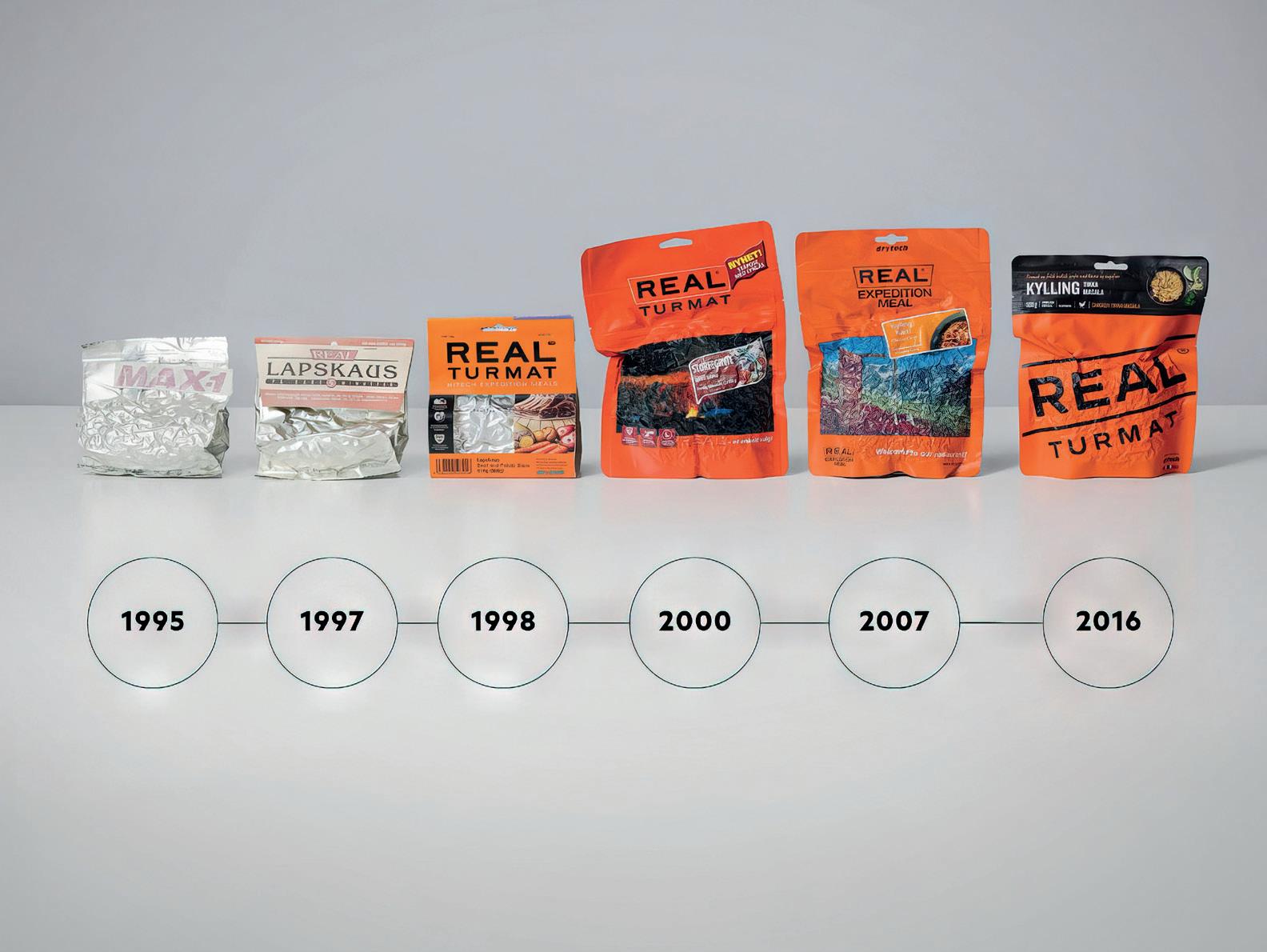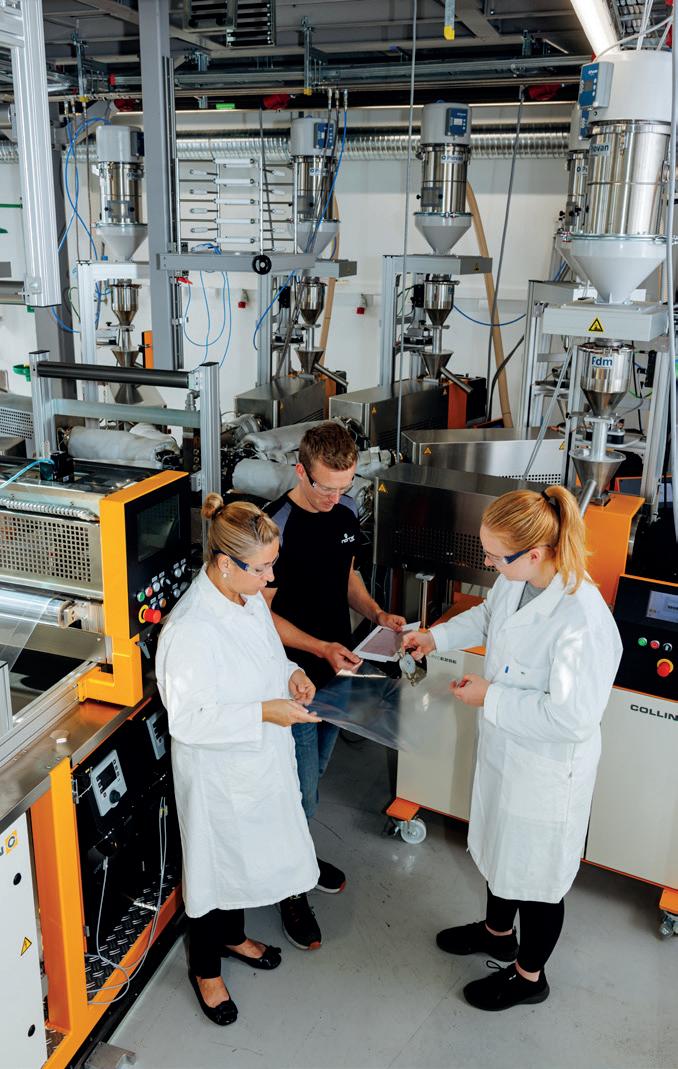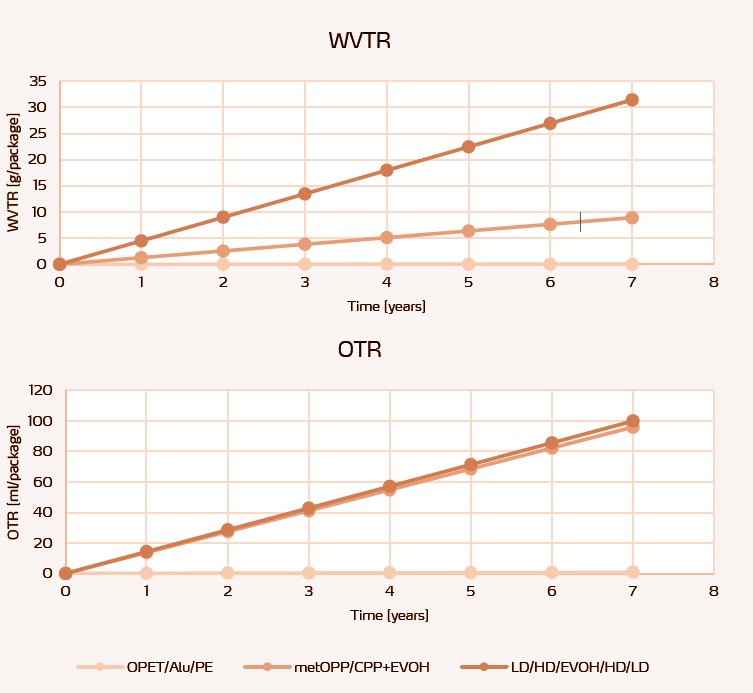
4 minute read
Development of packaging pouch for long shelf life
from Norner News 2023
by Norner AS
Author: Irene Helland (irene.helland@norner.no)
The European Commission's target is that all plastic packaging will be recyclable by 2030. To reach this challenging goal, there is an urgent need for innovations within the field of recyclable flexible packaging solutions.
Need for innovation
Drytech AS is a family-owned Norwegian manufacturer and distributor of freeze-dried meals, snacks, and drinks, based in Tromsø. They are the owner and producer of wellknown brands like Real Turmat and Real Field Meals. These products are recognized as premium, healthy, and lightweight food alternatives, and are packed in a stand-up pouch format. Drytech produces a significant number of portions annually. These are freeze dried, vacuumed, and prepared by adding hot water before eating. Real Turmat has a shelf life of 5 years and Real Field Meal has a shelf life of 7 years, which requires outstanding barrier performance from the packaging solution. The current pouch is a complex laminated structure with very high performance, but this is not recyclable according to current standards and recycling technologies.
The recyclability and re-use of materials are prerequisites for the transition to a circular economy, maintain market relevance, and fulfilling consumer requirements. This is a challenging task in general, and in particular for the packaging formats for Real Turmat and Real Field Meal with very high barrier and shelf life performance requirements for the freeze-dried and vacuum packed food products.
Project consortium
A new 3-year innovation project with Drytech, Norner Research, and partners from the whole value chain has been established to address this challenge. Other partners are MPack – a supplier of packaging solutions to the food industry, Skala Maskon – a supplier of tailor-made packaging machines to the food industry, Ragn Sells – a waste handling company and The Norwegian Defence Estates Agency, Forsvarsbygg (end-user). The Norwegian Research Council is supporting the strive for recyclable packaging solutions adapted to the circular economy and is funding the project.

Design for recycling
The new packaging solution(s) shall be a mono-material structure that is mechanically recyclable according to the classification system of the latest highly recognized RecyClass design for recycling guidelines. Recyclability classification in the RecyClass system is influenced by several factors such as the amount and type of barrier materials, printing and pigments, available recycling streams, compatibility, and Easy-to-empty and Easy-to-access indexes.
Solution development
The new solution must also have excellent functionality from production to end use. This will require significant material structure re-design and development. One of the most important challenges is to achieve the required long shelf life through sufficient barrier properties. The project will therefore address several major research topics, like barrier technologies and performance against oxygen, moisture, light, and aroma. Sealing technologies will be evaluated and food safety assessment by migration performance will also be addressed.
The project will further require considerable R&D efforts in the understanding of polymer structure-property relations, applied polymer research, polymer solution development, polymer processing technology, advanced characterization, and source separation of packaging waste. Research is also needed to understand and ensure that the packaging innovation fulfils the requirements for a RecyClass certification and is in accordance with EU legislation for Food Contact Materials.
Packaging prototypes will be produced and validated. Collection, source separation, and recycling of packaging to new raw material, in line with the circular economy principles, will also be demonstrated and evaluated according to defined evaluation protocols. The use of recycled material will also be demonstrated.
This project has major potential for sustainable value creation through a shift to recyclable and circular solutions.
A key challenge in the project is the shelf-life requirement, which depends on both permeability to oxygen and moisture. To illustrate this challenge and the superiority of an Alu foil laminate we have calculated the permeability with the Norner barrier calculator for some commonly available laminates, not related to Drytech, see below.







